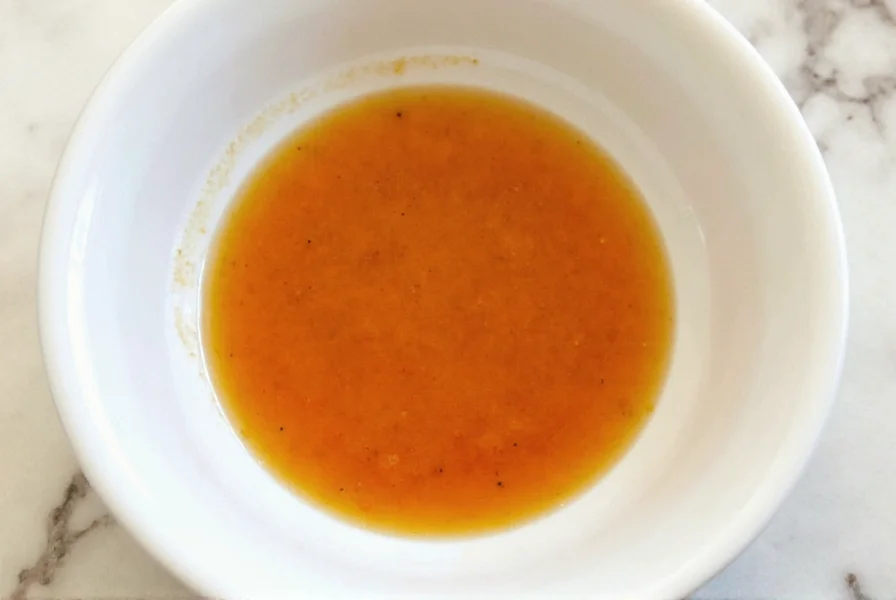Japanese carrot ginger dressing is a vibrant, tangy-sweet condiment originating from Japanese cuisine that combines freshly grated carrots, ginger, rice vinegar, soy sauce, and sesame oil. This easy Japanese carrot ginger dressing recipe creates a versatile sauce perfect for salads, marinades, and dipping that balances sweet, savory, and umami flavors without artificial ingredients.
For home cooks seeking authentic Asian flavors, mastering this Japanese-style carrot and ginger vinaigrette opens doors to restaurant-quality dishes. Unlike Western-style dressings heavy on sugar and oil, traditional Japanese carrot ginger dressing emphasizes fresh ingredients and balanced seasoning that complements rather than overwhelms delicate flavors.
The Cultural Roots of Japanese Carrot Ginger Dressing
While Western cuisine often treats dressings as afterthoughts, Japanese culinary tradition views sauces as essential flavor foundations. This Japanese carrot ginger dressing recipe evolved from sunomono (vinegar-based dishes) and ae (mixed seasonings) traditions where precise ingredient ratios create harmony. The dressing's popularity grew alongside Japan's post-war adoption of Western vegetables like carrots, which chefs incorporated into traditional seasoning frameworks.
Unlike its Americanized counterparts found in chain restaurants, authentic Japanese carrot ginger dressing contains no mayonnaise, honey, or artificial sweeteners. The natural sweetness comes solely from grated carrots and a touch of mirin, creating a cleaner flavor profile that enhances rather than masks ingredients.
Essential Ingredients Breakdown
Understanding each component's role ensures perfect results every time you make this authentic Japanese carrot ginger dressing ingredients list. Quality matters most with these core elements:
| Ingredient | Traditional Role | Substitution Options |
|---|---|---|
| Fresh carrots (1 medium) | Natural sweetness and vibrant color | None for authentic flavor |
| Fresh ginger (1" piece) | Spicy warmth and aromatic complexity | Galangal (different flavor profile) |
| Rice vinegar (3 tbsp) | Gentle acidity without harshness | Apple cider vinegar (milder than white) |
| Usukuchi soy sauce (2 tbsp) | Lighter saltiness without dark color | Regular soy sauce (use 25% less) |
| Toasted sesame oil (1 tsp) | Nutty aroma and richness | None (fundamental flavor element) |
Carrots provide more than just sweetness—they contain natural pectin that creates the dressing's characteristic silky texture when freshly grated. For the most vibrant color and flavor, use orange carrots rather than purple or yellow varieties. The ginger should be young and moist, not fibrous or dried.

Step-by-Step Preparation Guide
Creating this how to make Japanese carrot ginger dressing from scratch requires no special equipment and takes just 15 minutes. The key is proper ingredient preparation:
- Prepare the carrots: Peel and coarsely grate one medium carrot using the large holes of a box grater. Avoid food processors which create mushy texture.
- Prepare the ginger: Peel and finely mince 1-inch piece of fresh ginger, then crush with the side of your knife to release oils.
- Combine liquids: Whisk together 3 tablespoons rice vinegar, 2 tablespoons usukuchi soy sauce, 1 teaspoon toasted sesame oil, and 1 teaspoon mirin in a small bowl.
- Emulsify: Add grated carrot and minced ginger to liquid mixture. Whisk vigorously for 30 seconds until slightly thickened.
- Rest: Let sit at room temperature for 10 minutes to allow flavors to meld before using.
The dressing should have a smooth but slightly textured consistency with visible carrot strands. If separation occurs, simply whisk again before serving. For a thinner consistency suitable as a dipping sauce, add 1-2 teaspoons water.
Traditional Uses and Serving Suggestions
This traditional Japanese carrot ginger dressing uses extend far beyond simple salad dressing. In Japanese households, it commonly serves as:
- Hiyayakko topping: Drizzled over chilled tofu with bonito flakes
- Vegetable marinade: For cucumbers, daikon, or spinach in sunomono dishes
- Rice bowl accent: Swirled into donburi or chirashi bowls
- Noodle dressing: Tossed with cold soba or somen noodles
- Seafood complement: Served with grilled fish or seafood salads
When using Japanese carrot ginger dressing for salads, apply it just before serving to prevent wilting delicate greens. The dressing particularly enhances bitter greens like mizuna or radicchio, creating a balanced flavor profile. For heartier salads with cabbage or broccoli slaw, you can toss ingredients with the dressing 15-20 minutes before serving to allow flavors to penetrate.

Storage and Shelf Life
Understanding homemade Japanese carrot ginger dressing storage ensures food safety and optimal flavor. Unlike commercial dressings with preservatives, this fresh preparation has limited shelf life:
- Room temperature: Use within 2 hours for best quality and safety
- Refrigerated: Store in airtight container for up to 3 days (separation is normal—whisk before use)
- Freezing: Not recommended as texture degrades significantly
The natural enzymes in fresh carrots and ginger cause gradual flavor changes over time. For special occasions, prepare the dressing no more than 24 hours in advance. Always check for off odors or mold before using refrigerated dressing.
Variations for Dietary Needs
This healthy Japanese carrot ginger dressing substitute adapts well to various dietary requirements while maintaining authentic flavor principles:
- Vegan version: Already naturally vegan—just ensure mirin is vegan (some contain honey)
- Gluten-free: Use tamari instead of soy sauce
- Lower sodium: Reduce soy sauce by 25% and add 1/2 teaspoon dashi powder for umami
- Sugar-free: Omit mirin and add 1/4 teaspoon rice vinegar for balance
- Spicier version: Add 1/4 teaspoon shichimi togarashi or a few drops of rayu (chili oil)
For those seeking Japanese carrot ginger dressing health benefits, this recipe provides vitamin A from carrots, anti-inflammatory compounds from ginger, and healthy fats from sesame oil. The dressing contains no added sugars or artificial ingredients, making it a nutritious choice compared to store-bought alternatives.
Frequently Asked Questions
Can I use pre-grated carrots for Japanese carrot ginger dressing?
While convenient, pre-grated carrots contain preservatives that affect texture and flavor. Freshly grated carrots provide superior sweetness, vibrant color, and proper emulsification. For best results in this authentic Japanese carrot ginger dressing recipe, always use freshly grated carrots.
Why does my Japanese carrot ginger dressing separate?
Separation occurs naturally in oil-free dressings due to different ingredient densities. This Japanese-style carrot and ginger vinaigrette lacks emulsifiers like egg yolks, so simply whisk vigorously before each use. The dressing should thicken slightly as the carrot pectin activates during the resting period.
What's the difference between this and 'Japanese dressing' at American restaurants?
Americanized 'Japanese dressing' typically contains mayonnaise, sugar, and vegetable oil, creating a creamy, sweet profile. Authentic Japanese carrot ginger dressing uses no dairy or refined sugars, relying on fresh ingredients for balanced flavor. This traditional version has brighter acidity and cleaner taste that complements rather than overwhelms ingredients.
Can I use this dressing as a marinade?
Yes, this Japanese carrot ginger dressing works beautifully as a short-term marinade for fish, chicken, or tofu. The natural enzymes in ginger help tenderize proteins. Marinate for 30-60 minutes maximum, as the acidity can begin to 'cook' delicate proteins like fish beyond that timeframe.
How can I make the dressing smoother for a more elegant presentation?
For a refined texture while maintaining authentic flavor, finely grate carrots using the smallest holes of your grater, then press through a fine-mesh sieve to remove excess fiber. Alternatively, blend the dressing briefly in a small food processor, but avoid over-processing which can cause separation.











 浙公网安备
33010002000092号
浙公网安备
33010002000092号 浙B2-20120091-4
浙B2-20120091-4